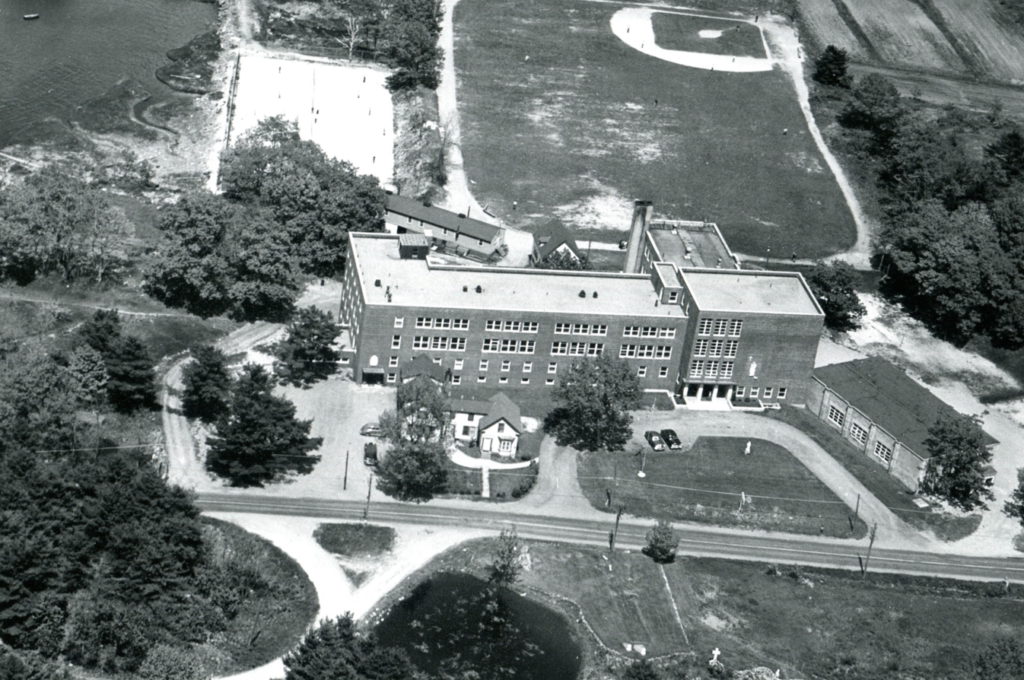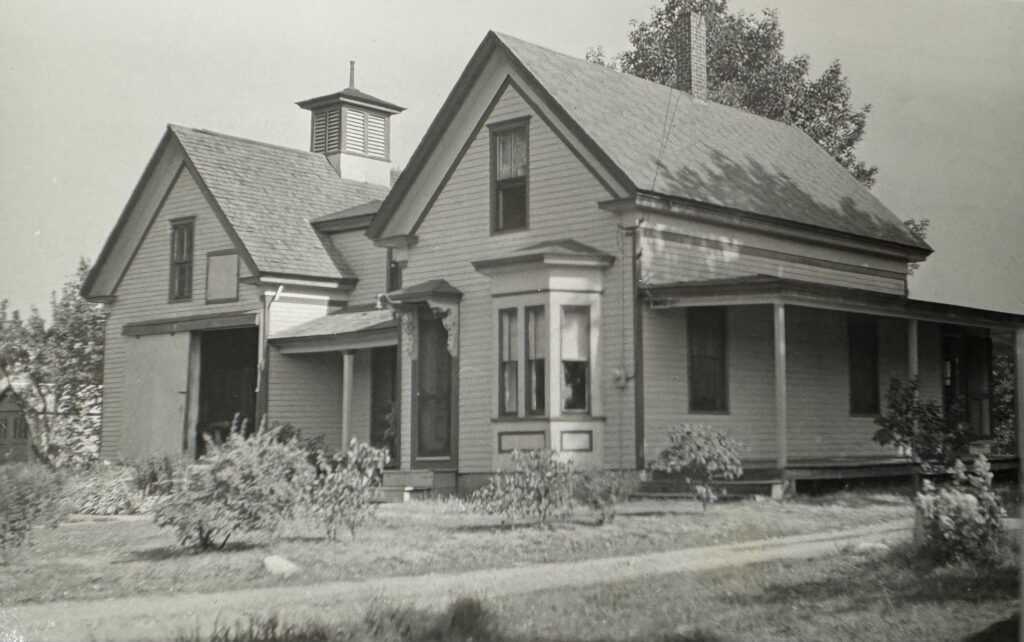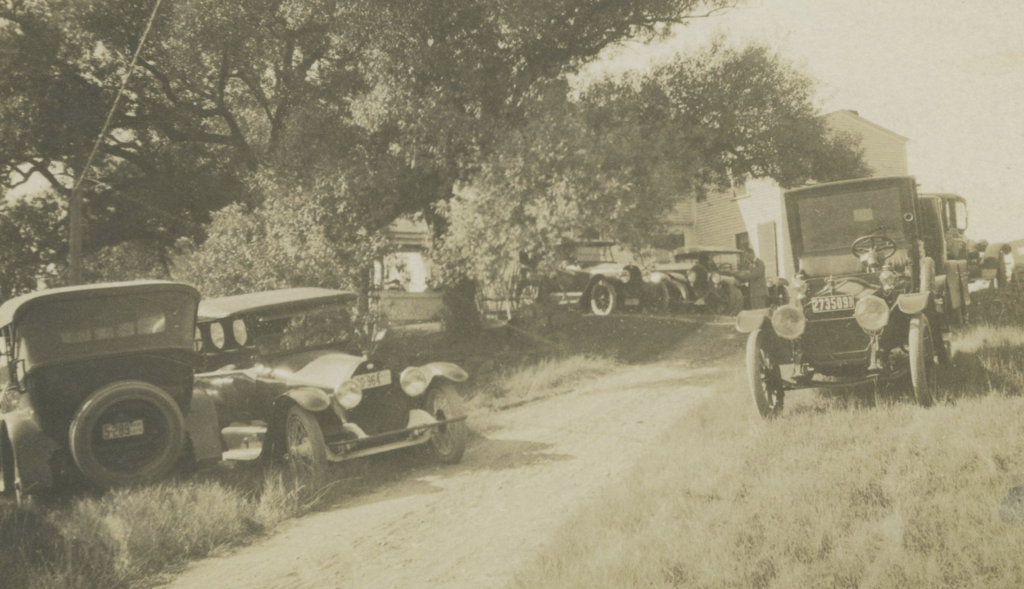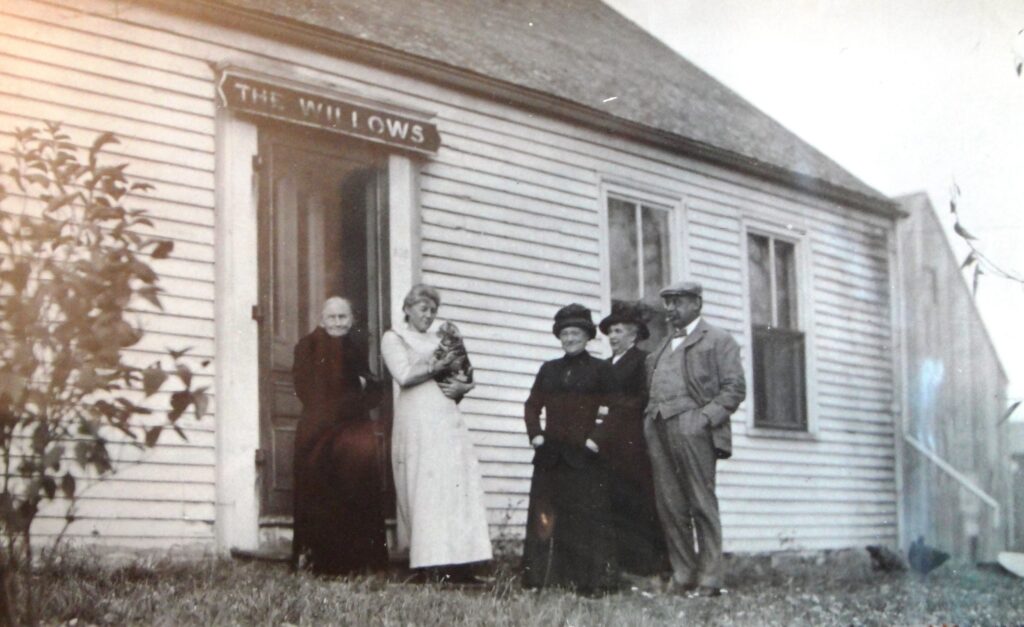In Fall 2020, archaeologist Arthur Anderson and historian Eric G. E. Zuelow studied a photograph hanging on the wall of one of the administrative offices at the University of New England.
It’s an aerial image taken in 1954. Although the large brick administrative, office, and academic building, Decary Hall, has changed some it is easily recognizable. The grounds look a bit different. There are many more buildings these days. But two things jumped out: a pond where a parking lot now sits and a mysterious house located just left of center in the photograph.

So many questions. When was it built? Was it part of the college or a private residence? Who lived there? What’s the story?!
Four years later, Anderson and Zuelow are teaching a course that aims to find answers. The class, HIS 399: Time Team New England!: Archaeology, History, and Unearthing UNE’s Past (TTNE), is part of a team teaching pilot program launched by the UNE College of Arts and Sciences Dean’s Office. The idea behind the pilot is simple: “explore how inter- and multi-disciplinary approaches might enhance student learning.”
During the Fall semester, using methodologies drawn from both archaeology and history, Anderson, Zuelow, and their students will explore the history of the house, as well as probe the existence of any other buildings in the area. At the same time, they and their students will look at how archaeology and history overlap, differ, and complement each other as ways of better understanding the past.
Already a few initial bits of information about the building have surfaced. It was called “The Wayside” and was probably built in the mid-1880s by a man named Alonzo Mitchell.

Next door, there was a second, and likely much older house, famous during the early twentieth century as a shore dinner hall. It was called “The Willows.” Both were owned by members of the Mitchell family, a clan with deep roots in the Biddeford area.

There are rumors about the house. It was a shore dinner hall, competing directly with one run by Alonzo’s sister, Abbie Flood, next door. One of Alonzo’s friends was engaged in rum running during Prohibition, possibly using the house in his activities. The house was built elsewhere and moved to the location. What’s true and what isn’t? Who were the Mitchells? How did they come to live in this area? When did they get into the restaurant business and why? What did they do before that?

When the Franciscans started the process of launching what would become St. Francis College (and then the University of New England) just behind the houses, Abbie Flood apparently sold The Willows. It was converted into a chapel and housing for the Franciscans. Some time later, the school acquired The Wayside and turned it into classrooms and a dorm. But what more can we learn? Why were the sales made? How much money changed hands? How did the modifications proceed and when/why were the buildings taken down? Perhaps most of all, what was life like in these structures during the St. Francis College days?
To paraphrase what they say at the opening of every episode of the popular British television program Time Team on which our class is loosely based: “We’ve got just one semester to find out!”
Watch this space for updates and stop by to chat with the team as they peel away the strata of UNE’s past. We’ll be digging every Wednesday afternoon from September 18 to October 16 and should be on hand several Saturdays as well. After that, we’ll be plunging into the archives and talking with as many people as we can who may have known The Wayside. This blog is your source for updates. Stay tuned!
— Prof. Eric G. E. Zuelow

